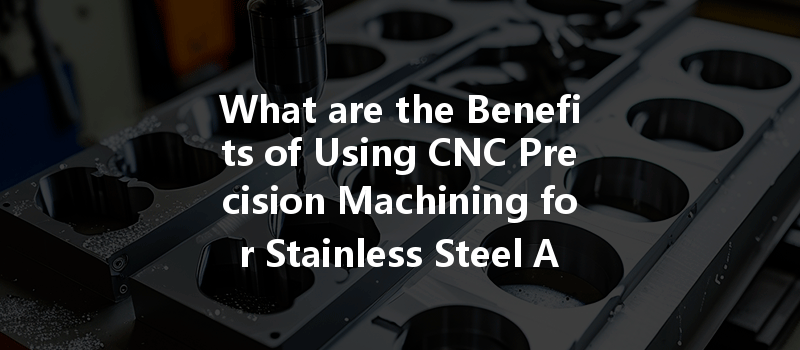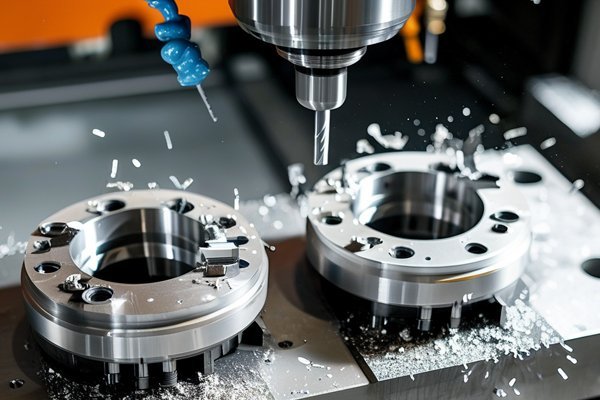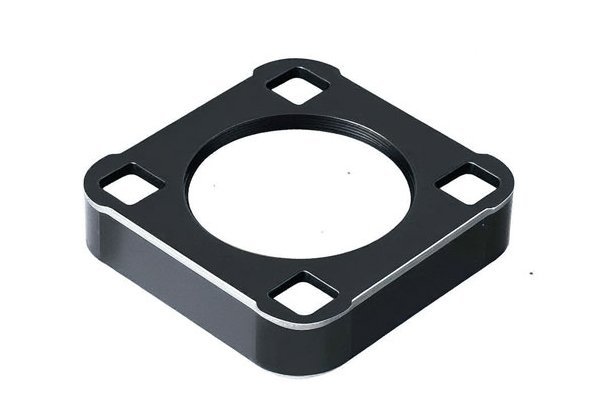*
Did you know that stainless steel is one of the most widely used materials in manufacturing and engineering? It accounts for approximately 70% of the total metal consumed across various industries today. This remarkable alloy is known for its robustness, corrosion resistance, and versatility. As industries evolve and demand for precision increases, the need for advanced machining technologies like CNC (Computer Numerical Control) precision machining becomes paramount.
In this blog, we’ll delve into the ins and outs of CNC precision machining specifically for stainless steel alloys, highlighting its benefits, understanding the process, and exploring applications across various sectors. So, if you’ve ever wondered how CNC machining can elevate your production quality and efficiency, you’re in the right place!
CNC precision machining refers to the use of computer-controlled machine tools to create complex parts and components from a variety of materials, including stainless steel alloys. This process is integral to modern manufacturing, providing unrivaled accuracy and repeatability.
1.1 The Importance of Precision
Precision is critical in today’s manufacturing landscape. Components that are even slightly off-spec can lead to catastrophic failures, safety hazards, and financial losses. CNC precision machining mitigates these risks by utilizing sophisticated algorithms and tooling to create parts that meet exact specifications.
1.2 Types of CNC Machining
1.3 CNC Machines Commonly Used for Stainless Steel
Stainless steel alloys are favored in various industries due to their unique properties, including:
2.1 Corrosion Resistance
Stainless steel contains chromium, which forms an oxide layer on the surface to prevent rust and corrosion. This property is vital for industries such as food processing, pharmaceuticals, and marine applications.
2.2 Strength and Durability
Stainless steel alloys possess excellent tensile strength and are suitable for high-load applications. They are able to withstand extreme temperatures, pressures, and wear, making them ideal for demanding environments.
2.3 Aesthetic Appeal
Stainless steel also has a sleek, polished finish that is visually appealing. This makes it a popular choice in the architecture and design industries.
2.4 Versatility
Stainless steel alloys can be easily formed, machined, or welded, allowing them to be used across numerous applications—from automotive to aerospace.
The advantages of utilizing CNC precision machining for stainless steel alloys are numerous, including but not limited to:
3.1 Enhanced Precision and Accuracy
CNC machining provides a level of precision that is difficult to achieve with manual machining. Tolerances as tight as ±0.002 inches can be achieved, making CNC the go-to choice for industries that require exact specifications.
3.2 Improved Efficiency
By automating machining processes, CNC technology significantly improves production speeds. Unlike manual machining, CNC machines can run continuously, leading to shorter lead times for production runs.
3.3 Consistency in Production
CNC precision machining ensures that every component produced is identical, which is crucial in industries where consistency is a requirement for safety and performance.
3.4 Waste Reduction
CNC machining minimizes material waste through precise cutting and shaping techniques. This not only reduces production costs but also aligns with sustainable manufacturing practices.
3.5 Flexibility in Design
CNC machines can handle complex designs that would be impossible with traditional machining. Rapid prototyping allows for iterative design modifications, making it easier to bring innovative ideas to life.
3.6 Scalability
Whether you need one bespoke part or thousands of identical pieces, CNC precision machining can easily scale to meet demands. This is particularly beneficial for companies looking to grow their product lines.
To fully understand the benefits of CNC precision machining for stainless steel alloys, it’s essential to know how the process works.
4.1 Design and Planning
Everything begins with a CAD (Computer-Aided Design) model of the desired part. The design is meticulously planned to ensure feasibility and is sometimes analyzed through simulations.
4.2 Programming the CNC Tool
Once the design is approved, it’s converted into G-code, a language understood by CNC machines. This code dictates the movement, speed, and operation of the machine tools.
4.3 Setting Up the Machine

The operator sets up the machine by loading it with the stainless steel alloy, calibrating tools, and ensuring all safety measures are in place.
4.4 Machining
Once setup is complete, the machining process begins. The CNC machine will follow the programmed G-code, cutting and shaping the stainless steel to the specified dimensions.
4.5 Quality Control
After machining, components undergo rigorous inspection to verify that they meet the desired specifications and quality standards.
4.6 Finishing Touches
Optional post-processing steps such as polishing, anodizing, or coating may be applied to enhance the surface quality and aesthetics.
CNC precision machining for stainless steel alloys finds applications in various sectors, such as:
5.1 Aerospace
The aerospace industry demands lightweight yet durable components that resist corrosion at high altitudes. CNC machining delivers precisely engineered parts that meet these challenging requirements.
5.2 Automotive
Automobiles require thousands of parts, many of which are made from stainless steel alloys. CNC precision machining ensures these components are built for durability and performance.
5.3 Medical Devices
The medical industry relies on precision and sanitation. CNC machining offers the required accuracy while ensuring that components are made from biocompatible materials.
5.4 Food Processing
In food processing, machinery made of stainless steel must meet rigorous hygiene standards. CNC machined stainless steel parts are often used in equipment due to their cleanliness and durability.
While CNC precision machining offers numerous benefits, it’s not without challenges. Identifying these challenges and addressing them effectively can lead to optimized results.
6.1 Tool Wear
Stainless steel is tougher than many other materials, which can lead to rapid tool wear. To combat this, companies can select high-quality cutting tools made from carbide or cobalt, or use coatings that enhance durability.
6.2 Machining Parameters
Finding the right machining parameters (speed, feed rate, depth of cut) for stainless steel can be challenging. Conducting thorough tests and analysis can help determine the optimal settings for a specific application.
6.3 Chip Removal
Effective chip removal is essential during machining. Implementing proper chip management systems will ensure that the workspace remains clear and safe, minimizing downtime.
6.4 Heat Generation
CNC machining generates a considerable amount of heat, which can result in thermal distortion. Employing cooling systems, such as flood coolant or misting, helps maintain temperatures within acceptable limits.
6.5 Costs
While CNC precision machining is typically more cost-effective for large production runs, initial setup costs can be high. However, by increasing production efficiency and reducing waste, companies can offset these costs over time.
As technology continues to advance, we can expect several exciting trends in CNC precision machining for stainless steel alloys.
7.1 Increased Automation
The integration of robotics and AI in CNC machining processes will further enhance speed, accuracy, and efficiency, making it possible to operate machines with minimal human intervention.
7.2 Advanced Materials
The development of new stainless steel alloys with improved properties opens up additional possibilities for CNC machining. Companies will have the opportunity to produce even more specialized parts.
7.3 Additive Manufacturing Integration
Combining CNC machining with additive manufacturing will allow for the creation of complex geometries that can offer enhanced performance.
7.4 Eco-Friendly Practices
As sustainability becomes a higher priority, manufacturers will increasingly adopt environmentally friendly practices, from recycling scrap material to using eco-friendly cutting fluids.
7.5 Enhanced Software Tools
Advancements in simulation and analysis software will streamline design and planning processes, enabling quicker iterations and refinements.
In summary, CNC precision machining for stainless steel alloys brings a wealth of benefits, from enhanced precision and efficiency to reduced material waste. Understanding and leveraging this manufacturing technique can significantly improve product quality and operational efficiency.
As industries continue to evolve, harnessing cutting-edge technologies like CNC machining will only become more crucial. Investing time in optimizing CNC processes can yield substantial returns in both the short and long term, solidifying your place in an increasingly competitive landscape.
This blog is not just an informative piece; it serves as a pivotal reminder of how far technology has come and the potential it holds for the future of manufacturing. If you’re considering CNC precision machining for your stainless steel components, remember that the time you invest in understanding this process can lead to substantial benefits for your business and your clients.
Whether you’re a seasoned manufacturer or just starting, embracing CNC precision machining for stainless steel alloys can be the transformative step your operations need to thrive in the demanding landscape of modern manufacturing.






